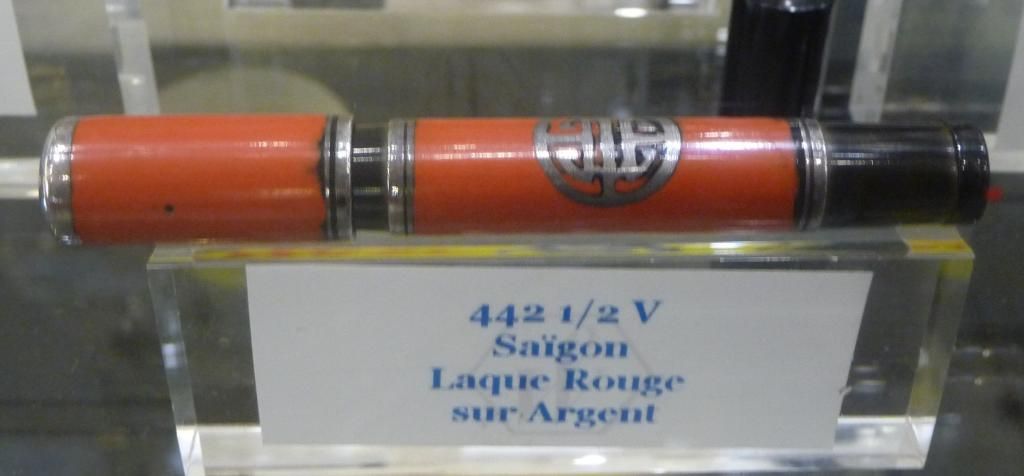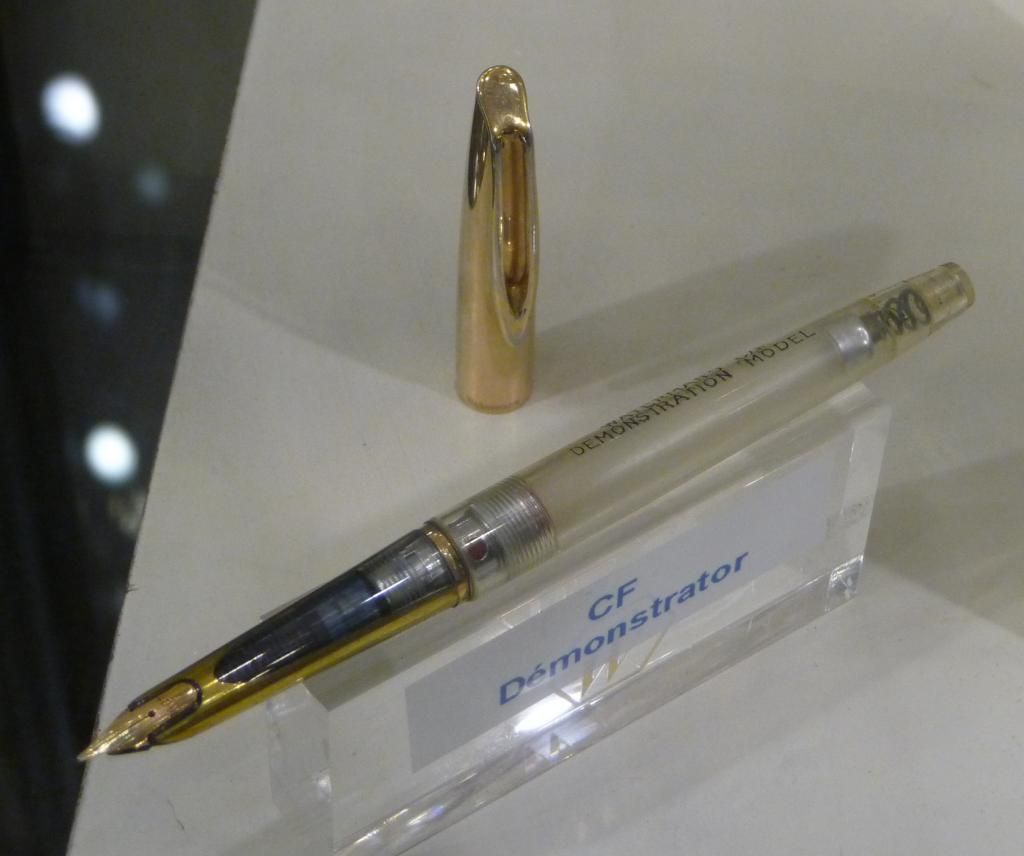People ask me if I collect pens, and I tend to reply that they collect me. Or that I accumulate them. I have at last count about 800 pens, of varying qualities and prices, but I hesitate to call it 'a collection' when I look at the amazing hoards and, just as importantly, the in-depth knowledge that some real collectors have acquired.
So here are a few links to posts that show what a real collection looks like.
I think David Isaacson says he's a Parker collector, but he has a really amazing collection of Sheaffer Balances which he's posted up on Fountain Pen Board - carmines, roseglows, and ebonized pearl. His posts show how he knows his stuff; what's in the catalogues, what's off-catalogue, versions that were only offered in Canada, variations of trim. My collection: "I want a Sheaffer Balance in each colour." A rather better collection: "I want a Sheaffer Balance oversize in each colour." A 'not completist but' collection - "I want a good variety of sizes and trims all in Roseglow". I don't think I will ever get to that third plane of existence!
Lexaf is an expert on all kinds of fascinating German and Dutch pens. I'm very partial to a bit of nice celluloid and one of the fascinations is tracking down celluloids that were used by a number of different manufacturers, and sometimes, that helps us work out which manufacturers made which brands. He's done some fascinating detective work on a thread about 'no name' (or second/third tier) pens, illustrated with ridiculously beautiful photographs. (Thomas Neureither, 'Kaweco' on Fountain Pen Network, also displays an array of unbranded pens that is just wickedly lovely. He's a real expert on German pen history.)
The great thing about this kind of collecting is that you never know, when you pick up a pen at a sale or in an antique shop, what journey it might send you on. Maybe the clip is the same as another pen - then you have to decide, is it the original clip? or maybe a replacement? - or maybe the celluloid is the same, or the pen is exactly the same as another you've got, but the imprint is different. There will always be some detective work to do.
That's a very diverse collection of course. It is possible to concentrate a lot more.
Is it possible to make a collection out of a single pen? Yes.
Quite a few collectors have concentrated on the Parker 51, the Parker Vacumatic, or the Waterman Man 100, all of which have an impressive number of different colours, versions, special editions, sizes, and so on. But is it possible to make a collection out of the Lamy 2000 - any colour as long as it's black?
Well, yes, actually it is. For a start, because the pen has been made ever since 1966, it's been through a number of small design changes, including one of major historical importance - the change from 'W. Germany' to 'Germany' as the place of manufacture! - so there are different versions of the basic pen to collect. Then there are the special editions, the ballpoint and rollerball and pencils, and the special ballpoint editions.
I love this pen and I have three regular fountain pens and a few of the other versions, but the guy who really knows this one is Brandon Hollingshead. His impressive Lamy 2000 post is an absolutely crucial reference for Lamy lovers. I particularly like the fact that he has put time and effort into tracking down design references outside the fountain pen world.
I've found these collectors a real inspiration in my own learning about pens. These threads are all worth searching out, and if you're reading this and you're not already a member of FPN and Fountain Pen Board, you know what to do.
So here are a few links to posts that show what a real collection looks like.
I think David Isaacson says he's a Parker collector, but he has a really amazing collection of Sheaffer Balances which he's posted up on Fountain Pen Board - carmines, roseglows, and ebonized pearl. His posts show how he knows his stuff; what's in the catalogues, what's off-catalogue, versions that were only offered in Canada, variations of trim. My collection: "I want a Sheaffer Balance in each colour." A rather better collection: "I want a Sheaffer Balance oversize in each colour." A 'not completist but' collection - "I want a good variety of sizes and trims all in Roseglow". I don't think I will ever get to that third plane of existence!
Lexaf is an expert on all kinds of fascinating German and Dutch pens. I'm very partial to a bit of nice celluloid and one of the fascinations is tracking down celluloids that were used by a number of different manufacturers, and sometimes, that helps us work out which manufacturers made which brands. He's done some fascinating detective work on a thread about 'no name' (or second/third tier) pens, illustrated with ridiculously beautiful photographs. (Thomas Neureither, 'Kaweco' on Fountain Pen Network, also displays an array of unbranded pens that is just wickedly lovely. He's a real expert on German pen history.)
The great thing about this kind of collecting is that you never know, when you pick up a pen at a sale or in an antique shop, what journey it might send you on. Maybe the clip is the same as another pen - then you have to decide, is it the original clip? or maybe a replacement? - or maybe the celluloid is the same, or the pen is exactly the same as another you've got, but the imprint is different. There will always be some detective work to do.
That's a very diverse collection of course. It is possible to concentrate a lot more.
Is it possible to make a collection out of a single pen? Yes.
Quite a few collectors have concentrated on the Parker 51, the Parker Vacumatic, or the Waterman Man 100, all of which have an impressive number of different colours, versions, special editions, sizes, and so on. But is it possible to make a collection out of the Lamy 2000 - any colour as long as it's black?
Well, yes, actually it is. For a start, because the pen has been made ever since 1966, it's been through a number of small design changes, including one of major historical importance - the change from 'W. Germany' to 'Germany' as the place of manufacture! - so there are different versions of the basic pen to collect. Then there are the special editions, the ballpoint and rollerball and pencils, and the special ballpoint editions.
I love this pen and I have three regular fountain pens and a few of the other versions, but the guy who really knows this one is Brandon Hollingshead. His impressive Lamy 2000 post is an absolutely crucial reference for Lamy lovers. I particularly like the fact that he has put time and effort into tracking down design references outside the fountain pen world.
I've found these collectors a real inspiration in my own learning about pens. These threads are all worth searching out, and if you're reading this and you're not already a member of FPN and Fountain Pen Board, you know what to do.













